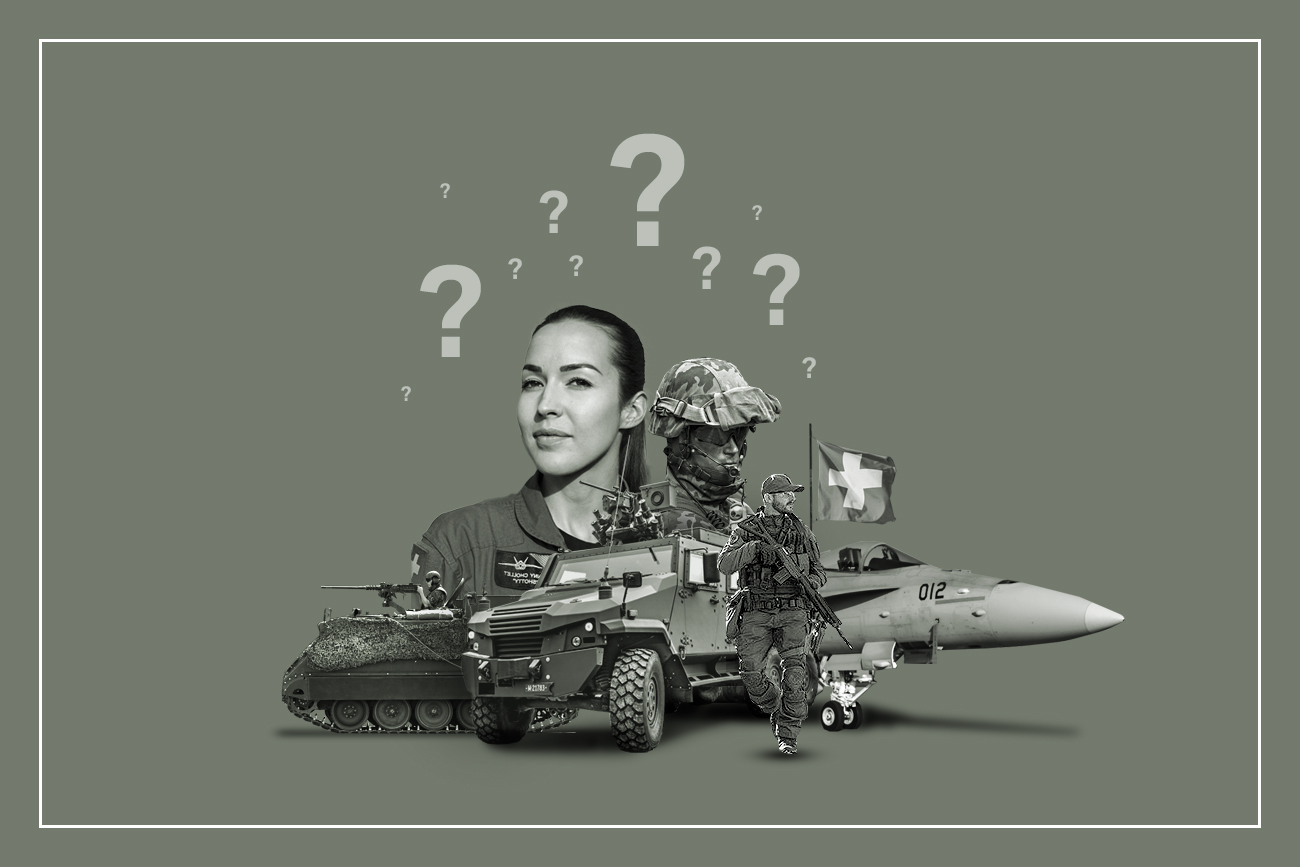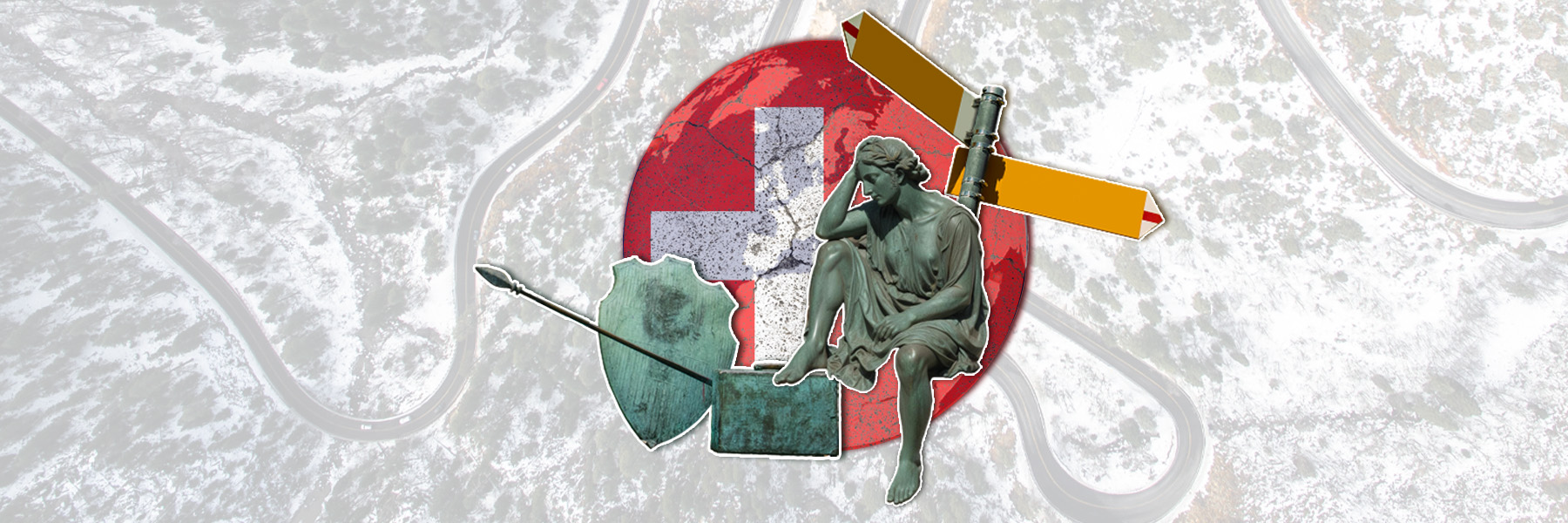
Why the Swiss army is training for an emergency in Austria

In the largest foreign exercise involving ground troops in 30 years, the Swiss army is practising recapturing land with Austrian and German soldiers. The fictitious scenario comes at a time of geopolitical uncertainty – and is being closely watched by Russia.
At 157 square kilometres, the training area in Allentsteig in northeastern Austria is around six times the size of the combat training centres in Switzerland. Exercises can be carried out with tanks and off-road vehicles not only on predetermined routes. Conditions are realistic; conditions like in war.
For the exercise, the Swiss Army moved 78 vehicles from Thun in canton Bern to Austria. Eleven goods trains were required, with a total length of 4.3 kilometres – a major logistical task.

More
The Swiss army: your questions answered
The Swiss Army’s Mechanised Battalion 14 and Mechanised Brigade 11 are on site. These are soldiers who are completing their annual refresher course.
Participation is voluntary, as there are no so-called marching orders for service abroad in Switzerland. This is not without its problems for the army. As the media reported last yearExternal link, it had trouble finding the necessary soldiers.
The name of the exercise, TRIAS 25, reflects the units of the three participating countries: Germany, Austria and Switzerland. They are divided into defenders and attackers.
“The training helps the Austrian Armed Forces, which will be geared towards military national defence in accordance with the 2032 development plan,” says Major Sebastian Schubert from Austria.
Austria adopted the plan following Russia’s invasion of Ukraine in 2022. Switzerland also wants to strengthen its army in preparation for a defensive war.
The tone of the officials is general, but the geopolitical context resonates.
‘Train as you fight’
In the large-scale exercise the military is assuming that the enemy is using hybrid threats such as disinformation campaigns and cyberattacks and is carrying out attacks on critical infrastructure.
Even if Russia is not mentioned directly, it is clear who is meant.
It is obvious that Russia is eyeing these exercises with suspicion. It’s of little help that Austria is neutral, that Switzerland, which is just as neutral, provides the vast majority of the army personnel taking part, and that NATO member Germany only plays a minor role.
However, officials don’t want to talk about the political implications. Austrian Defence Minister Klaudia Tanner prefers to focus on the pragmatic. “A principle for armies all over the world is ‘train as you fight’. Exercises, even on this scale, are the cornerstone of maintaining military capabilities,” she says.
This has nothing to do with a rapprochement with NATO, she adds, explaining that if a neutral state carries out exercises in and with another neutral state, this can only have advantages for all the armies involved.
Is Swiss neutrality eroding?
“We don’t follow the NATO decision-making process,” says Swiss exercise leader Brigadier Christoph Roduner. “We follow our own regulations, and our partner organisations accept that. But it’s exciting when we can compare ourselves with the NATO performance standards of others on the ground to see whether we easily fulfil them.”

The “others on the ground” are the two platoons of the German Armed Forces that operate according to these standards as a NATO member state.
In Switzerland, the right-wing Swiss People’s Party expressed concerns that, despite all assurances to the contrary, this major tri-national exercise was a first step towards participation in NATO exercises, which would be difficult to reconcile with neutrality.
Swiss neutrality is under pressure. Our overview:

More
What does the future hold for Swiss neutrality?
In Austria, the commander of the ground forces, Benedikt Roos, is at pains to emphasise that TRIAS 25 is merely a training exercise with foreigners, which he hopes will provide valuable insights for the defence of Switzerland.
Roduner says: “We want to learn lessons. Are we using our strengths correctly?” In Austria there’s a unique opportunity to test this, he says.
Even bigger exercises to come
The four-week exercise, which will continue until May 9, is a first in this form. In the coming years, in 2027 and 2029 to be precise, the training facility is to be expanded to battalion strength, and ultimately training will even take place on a large scale.
With the unstable security situation, it seems that things that were unthinkable just a few years ago are now feasible.
“Especially as neutral states, we must always be prepared, because we cannot rely on any alliance in the event of an emergency,” says Klaudia Tanner. “That’s why I don’t see us moving closer together in this respect, but rather preparing and practising together to maintain our military capabilities for national defence.”

It is therefore fitting that the Austrian army has recently completely renovated the troop accommodation at the Allentsteig military training facility at a cost of €14 million (CHF13.1 million).
The exercise in Allentsteig is also a financial investment for Switzerland, as TRIAS 25 has already cost CHF4 million ($4.8 million) more this year than a regular domestic refresher course.
Edited by Marc Leutenegger. Translated from German by DeepL/ts

More
Our weekly newsletter on geopolitics

In compliance with the JTI standards
More: SWI swissinfo.ch certified by the Journalism Trust Initiative




























You can find an overview of ongoing debates with our journalists here . Please join us!
If you want to start a conversation about a topic raised in this article or want to report factual errors, email us at english@swissinfo.ch.